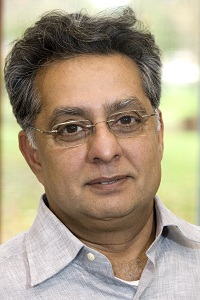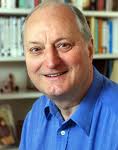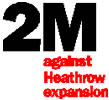Davies Report "As Bad As It Can Get"
Recommending more night flights, mixed mode and new runways
The Sir Howard Davies Airports Commission has told the Government to increase the number of night flights allowed to land at Heathrow before six in the morning.
Davies wants the extra ‘night flights’ to come in between 5am and 6am to avoid congestion later in the schedule. The ‘short term’ recommendation is included in Sir Howard’s report, published today, on aviation expansion.
The commission has also shortlisted Heathrow among potential locations for new runways despite its existing noise impacts being far more severe than any other airport in Europe.
The report suggests one extra runway will not be enough to meet long term demand, leaving the door open to a fourth Heathrow runway.
Sir Howard also proposes allowing Heathrow to adopt ‘mixed mode’ operations if new runways take too long to build. This would mean ending the existing ‘runway alternation’ system which gives communities under the existing flightpaths a regular break from aircraft noise. Instead planes could come in over places like Putney and Battersea constantly throughout the day.
The 2M Group of councils says the commission’s recommendations would maximise noise pollution levels for existing flightpath communities and expose large swathes of London to new disruption.
The local authorities say flights during the early morning period are by far the most disruptive and point to mounting evidence of the serious affects they have on peoples’ health and quality of life.
 Leader of Wandsworth Council and 2M spokesman Ravi Govindia said:
Leader of Wandsworth Council and 2M spokesman Ravi Govindia said:
“This is about as bad as it could be. Davies has points the way to more night flights, then mixed mode, then a third and fourth runway. This would add up to a serious deterioration in the quality of life for communities surrounding this airport. Davies has put everything Heathrow wants on the table and our residents are expected to live with the consequences.
“There is clear evidence that early morning arrivals are the most disruptive of all airport operations and can have serious consequence for peoples’ health and well-being. Mixed mode would mean all day noise with no respite and extra runways would vastly increase this airport’s already enormous noise footprint.”
 In response to the interim report by the Airports Commission, Richard Tracey, GLA Conservatives transport spokesman says:
In response to the interim report by the Airports Commission, Richard Tracey, GLA Conservatives transport spokesman says:
“I regret that the Davies’ Commission has not taken the opportunity to rule out any expansion of Heathrow in its interim report. The reality is that expansion would be extraordinarily difficult and, while I am surprised that this is not already proved clear, my hope and expectation is that the further investigation carried out by the Commission will recognise that expansion cannot happen at Heathrow.
“The noise from Heathrow already has a negative impact greater than that of any other airport in the world. No other major city believes it is sensible to fly planes over so many millions of people. In addition, in order to become the hub airport London needs, Heathrow would need 2 additional runways and the capacity to expand further. This is not credible. No one has been able to explain why moving sections of the M25 and the M4, destroying thousands of homes and building the public transport infrastructure to carry millions more passengers per year to and from Heathrow is in the least bit credible.
“The silver lining of the report is that the Commission will continue to look at the case for building a new airport on the Isle of Grain. This airport could operate for 24 hours a day, could start with 4 runways and have room for expansion and would affect relatively tiny numbers of people. If the Commission is to have any credibility it will recognise that building a new airport is the only viable option amongst those put forward in the interim report. Finally it is clear that the Commission should not wait until 2015 to bring forward its final proposal, but make its decision in 2014.”
 2M aviation experts are now examining the report in detail and will release further analysis later this week.The 2M Group of councils defeated the previous Government’s plans for a third runway in the High Court in 2010 on environmental and noise impact grounds.
2M aviation experts are now examining the report in detail and will release further analysis later this week.The 2M Group of councils defeated the previous Government’s plans for a third runway in the High Court in 2010 on environmental and noise impact grounds.
The final report of the Airports Commission is due to be published in summer 2015, two months after the next General Election.
THE PROPOSALS IN DETAIL
Demand
Davies believes that there is only demand for 1 new runway in London and the South East for the foreseeable future. Therefore a 4 runway Heathrow has been ruled out.
Gatwick in
Davies will assess the merits of a second runway at Gatwick.
Heathrow in
Davies will assess the merits of a 3rd runway at Heathrow
- he has ruled out the southern option and the ‘Sipson’ option
- he will look at a new runway to the North West of the Airport, as proposed by Heathrow Airport
- he will look at the northern runway proposed by the promoters of the Heathrow Hub: heathrowhub.com The existing northern runway would be extended at one or both ends. The result is that it becomes two separate, in-line runways – one for aircraft landing and one for taking off. The promoters argue that, because the runway is further west, it will reduce noise over West London but Heathrow Airport have rejected it because it would mean all-day flying on the northern runway, i.e. residents would get no respite.
Stansted – rejected
Davies has ruled out any more runways at Stansted. He has cited three reasons:
- New runways would create significant problems with the crowded airspace in the region (it is one of the busiest pieces of airspace in Europe)
- Expansion of Stansted might impact adversely on Luton and London City Airports
- The regeneration benefits would be minimal in an area with one of the lowest rates of unemployment in the country
Estuary Airport – neither in nor out
Davies recognizes it has benefits in terms of noise but has major concerns about it:
- It may well infringe the EU Habitats Directive, particularly the clause which requires all other options for airports to be seen to fail before it can be proceeded with.
- Surface access would be problematic and costly
- The airlines are not at all keen on it and may be reluctant to use it.
December 17, 2013
